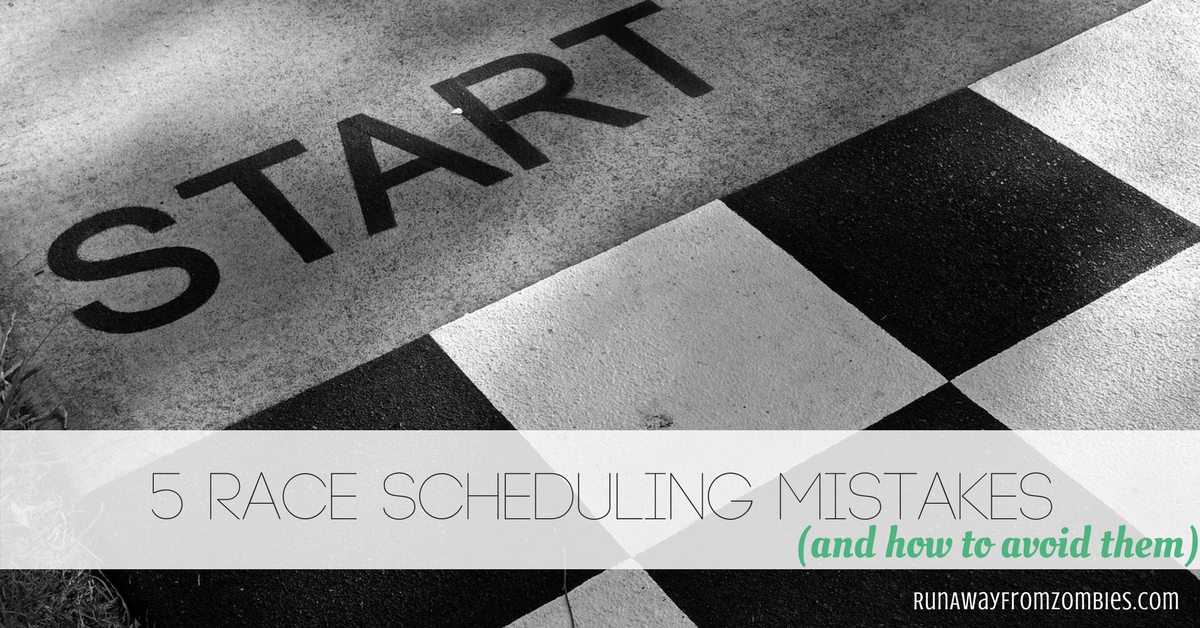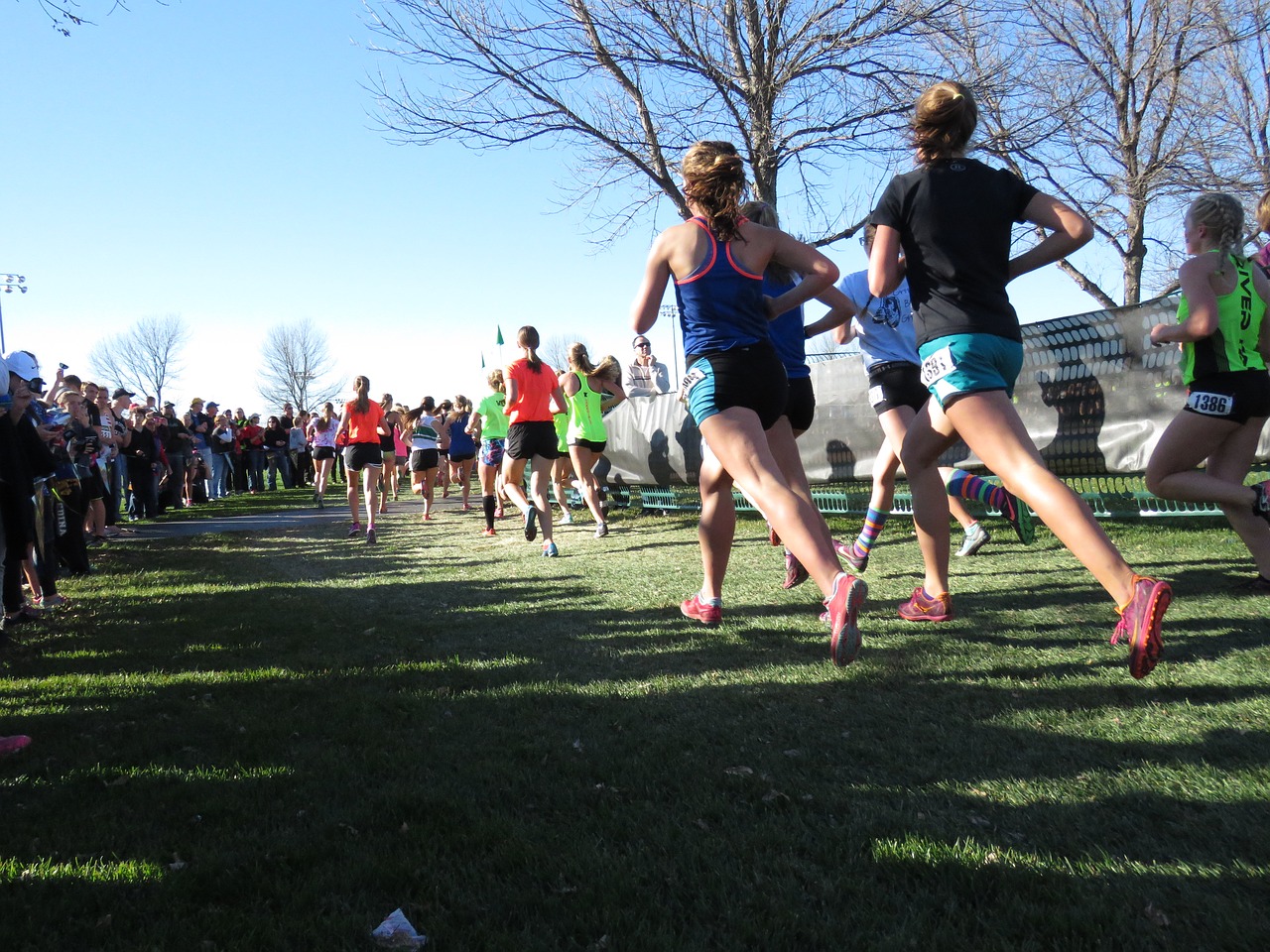 Do you have a goal race that you’re training for? You want to show up fresh, trained, and ready.
Do you have a goal race that you’re training for? You want to show up fresh, trained, and ready.
And along the way, you want to run in some really cool races. Maybe they’re with friends. Maybe you do them every year as a tradition. Maybe they’re just to break up the boredom of training.
How do you know when you’ve taken on too much? How do you know when you’re sabotaging your goal?
Don’t make these 5 mistakes when adding races to your training plan.

5 Mistakes to Avoid when Adding Races to Your Training Plan
1. Ignoring recovery time needed for each race
You sign up for races, ignoring the time needed for physical and mental recovery which will interfere with your training plan.
Maybe you end up taking days off post-race that you weren’t planning. Or maybe you push forward without rest. You make it through the workouts, but show up to your goal race overtrained and fatigued.
Related: How to Avoid Overtraining
2. Depending on races for your training
Instead of following a plan, you just sign up for a bunch of races. You think that all of those races will make you stronger and prepare you for your dream race.
Races are not magic. They can’t replace consistent, specific training for your goal.
3. Swapping out too many long runs for races
Races are often on the weekend, which is also when long runs are typically scheduled. When you race, you often swap a long run for a short race. Or, you end up missing your long run because you’re resting before or recovering from a race. But racing gave you a good workout. You’re sore. Same thing, right?
Long runs are important for building a strong aerobic base and increasing endurance. They spark adaptations in your body, improving your muscle and circulatory systems. They make you an efficient runner, capable of performing on your feet for long periods of time.
Racing also teaches you great things, but not the same things. If you miss too many long runs, you’re going to miss out on some great benefits.

4. Not modifying your training plan
Sometimes races don’t land on the weekends we want. You ignore a cutback in mileage and instead run a half marathon race. Instead of your peak long run, you run a destination 5K. And, you don’t compensate in your plan for those missed components.
Sometimes simple tweaks are all that’s needed to make a poorly timed race part of a training plan that’s better than before. Understand your key workouts and your key rest times and prioritize them around your races, rather than dropping them off the plan.
5. Not adding any races
You go through an entire training cycle and line up at the starting line of your DREAM RACE. All your hard work is on the line, and you haven’t done a single race to practice your pacing strategy or your nutrition timing. Also, you forgot to bring your water bottle and your safety pins.
Practice makes perfect. If you’re seeking maximum performance in a race, you need to practice racing.
Even if you’re training for a distance you’ve never tried before, doing races of shorter distances can help you practice the logistics and soothe some of those racing jitters.

5 Smart Ways to Add Races to a Plan
1. Sprinkle races
Most training plans have plenty of room and buffer for racing. Just be wary of cutting into a plan’s foundation with too many unrelated races.
Add your MUST HAVE races, and then reconsider the lower priority races with your goal race in mind. Will you be taking away or helping your training?
Try to pick races that will enhance your training.
2. Make a short race part of a bigger workout
If you have an 8 mile long run on the plan, but are signed up for a 5K race, then include the race in your long run. Sandwich the races between a long warm up and cool down, or use the 5K to finish your long run fast. This has the added benefit of teaching you to run hard on tired legs.
If the race has different distance options, choose the best one for your training. If you have an 8 mile long run scheduled, sign up for the 10K instead of the 5K. If the longer distance’s recovery time is going to cut into your training, choose the shorter distance.
 3. Strategically place races
3. Strategically place races
Training races
Sign up for races as specific training races. Some possibilities include a baseline race, a midpoint check up, a tune up race a couple of weeks before your goal race, and even a post-goal race (for another shot at your goal or as a victory lap).
I placed a half marathon halfway through my training plan. This gives me time to see how my training is going and make any changes. It also allows me to practice a new pacing strategy, if I want.
Non-training races
Running your favorite 5K or 10K during your cutback week when your long run is shorter can be great timing.
In my half marathon training, I designed a cutback week around the Craft Brew Fest 5K (a race I’ve wanted to run for years). Since 3 miles is short even for a cutback week, I kept one of my midweek runs the same (8 miles).
4. Rest, don’t taper
Remember that it takes 3 weeks or so before your body sees the full effect of a workout, growing stronger and adapting. So, pay close attention to what you’re doing a month out from your goal race.
Taper (decrease mileage to prepare your body to race) only for your goal race. Rest the day or two before other races in your plan, but don’t alter large chunks of your training plan for a lower priority race. Those chunks might be prime training time for your goal.
Related: How to Taper for a Big Race
5. Calculate recovery time
A general rule is one day recovery for every mile raced. This doesn’t mean you wouldn’t run those days, but that your body is still recovering and you’re not going to get the best training out of those days.
While one mile = one day isn’t a hard rule, you can still see how too many races could really mess up a training plan. You’re not doing yourself any favors by trying to run hard or far with a recovering body.
So, remember when you sign up for races that you’re also signing up for the recovery days.
I only have 2 half marathons in my 2 month training cycle – one in the middle and one at the end. I know that half marathon races need much more recovery time than a simple long run and I don’t want to take away from my training.
Conversely, when I did a 5K training cycle last year, I ran in 6 5K races over the same 2 month period. 5Ks require less recovery time. I used them as some of my hard effort sessions and to practice pacing.
Related: My 5K PR Blog Series

For the race maniacs
If you are someone who likes to race often or use it as your training, then speak with your coach about how to get the most out of your racing season.
Plan key workouts on non-race weekends and during the week, so that you can continue to see improvement in your performance without invading your prep and recovery days.
Avoid Race Scheduling Mistakes
Racing is great, but recognize each race has two costs — the workout that you’re swapping out, and the time it takes to recover.
Balance between chipping away the foundation of your plan and fitting in every listed workout and race. Listen to your body and your mind. Overworking and overtraining leads to under performance, just as missing key training principles does.
Train smart, race hard, and recovery well!





cs открыть кейсы cs 2 оружейный кейс